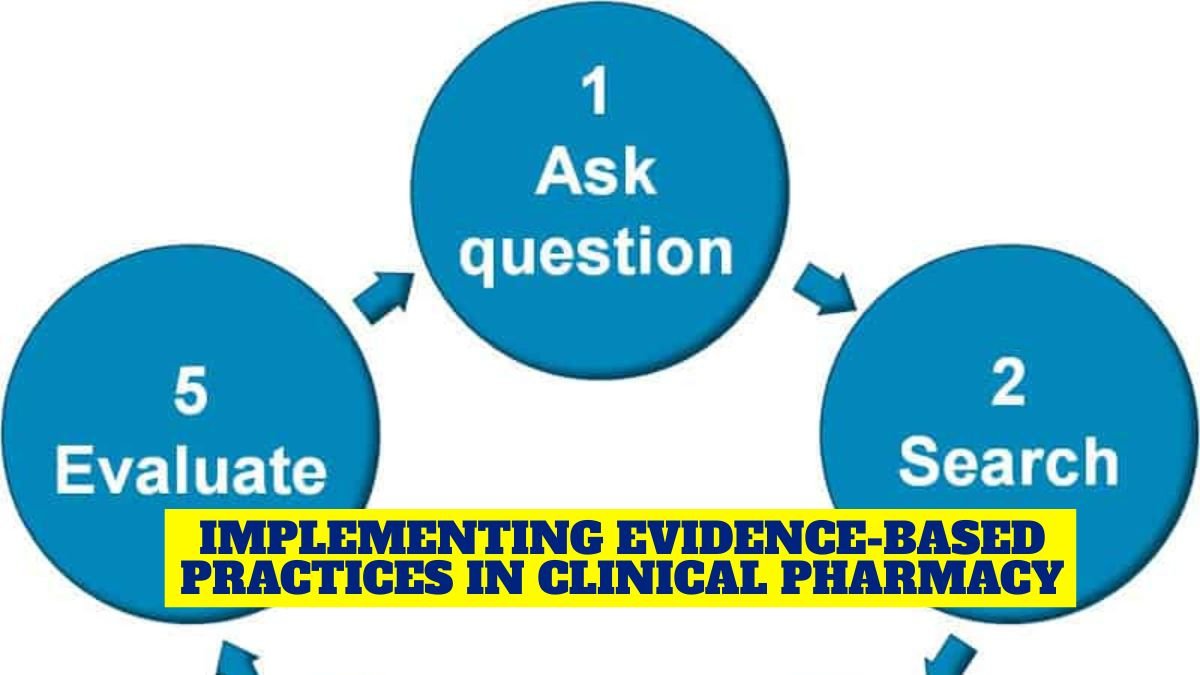The use of evidence based practice in clinical pharmacy has been found to be of high significance in the present day healthcare environment. This has been unavoidable to provide the most optimal and safe medical services to patients. It is not necessarily to be dependent on the latest medical research, but it is also important in making decisions based on the experience of the physician, and personal likes and preferences of the patient. This is done to make sure that the treatment or remedial that the pharmacist prescribes is founded on scientific facts besides being consistent with the lifestyle, values and preferences of the patient.
The implementation of evidence based practices is achieved in a systematic five step process. This is not only helpful in the decision-making process but also in building trust and interaction between patients and clinicians. This article is going to elaborate on this step by step process, which has five steps, and their advantages, hindrances of implementation, and how to overcome them.
Five-Step Process
1. Developing an accurate Clinical Question.
The initial and the most significant step in the evidence-based practices is to be able to formulate the clinical question. This step entails the formulation of question such that the scientific literature holds the answer to the question. It can be in the PICOT format that consists of patient/population, intervention, comparison, outcome, and time period. This method makes the question very specific and understandable and a good answer to it can be readily found in the research literature.
Formulation of specific questions assists the pharmacists in making sure that research and evidence available are perceived correctly without any confusion. It also aids in proposing more appropriate and personalized solutions, with references to individual circumstances of the patient and the history of his health.
2. Systematic Search of the Optimal Evidence.
The second step involves the pharmacist finding the optimal evidence in the available research and literature sources. This is associated with collecting data of both primary research, secondary literature and tertiary sources. This process is done to make sure that their practices on the care of patients are scientifically sound and current.
Evidence searching is not based solely on search engines; it is conducted in a systematic and methodical manner so that no important information is missed. Researchers and pharmacists must ensure that the information selected is reliable, up-to-date, and relevant to the patient’s circumstances.
3. Critical Evaluation of Evidence
Critical evaluation of the evidence obtained is done in the third step. It is used to determine the accuracy, relevance and reliability of the results of a study. Pharmacists have to think on the study design, sample size, potential bias among others. Now, GRADE system is applied, which is a structured approach towards the evaluation of the quality and trustworthiness of evidence.
Critical appraisal does not only review the accuracy of the research results, but it also makes sure that the application of the evidence to patient care would be safe and advantageous. This enables the pharmacist to determine the most suitable treatment and drugs that can be used on the patient.
4. Implementing the Evidence
The fourth step involves putting the evidence that the pharmacist has chosen following critical appraisal into practice. This is not a decision that is made through research only, but a combination of what the physician has been through, and also what the patient likes. This is aimed at ensuring the patient gets scientifically proven treatment that is both safe and optimal to the patient.
This is to be done by the pharmacist who has to talk with the patient. The decisions they make should be founded on the concerns, lifestyle and expectations of the patient as far as treatment is concerned. By doing so, evidence-based practice is not only a scientific but also patient-centered practice.
5. Evaluating Outcomes
The fifth step involves the assessment of the effectiveness and safety of the carried-out treatment. This is to make sure that the patient is gaining and not getting any negative effects. New questions can emerge based on this analysis and so on. The assessment of outcomes does not only prove the effectiveness of the current treatment but also assists in making the future decisions.
Successful Implementation and Addressing Barriers
Overcoming Personal Barriers
Many personal and environmental barriers to implementing evidence-based practices are essential. To overcome personal barriers, increasing knowledge and skills is essential. Pharmacists should provide training and educational resources in critical appraisal and literature searching.
In addition, developing a positive attitude is also important. Practitioners must believe that following evidence-based practices will provide real benefits to patients. Encouraging curiosity and a spirit of learning helps overcome personal barriers.
Addressing Environmental Barriers
Implementing evidence-based practices also faces organizational and environmental barriers. Senior leadership support is essential. When senior members of the organization support the process, pharmacists are more likely to adopt and maintain it.
Furthermore, using effective implementation strategies, such as audits and feedback, clinical reminders, and interactive education, can make new practices sustainable. Appointing “change champions” or influential leaders to drive change also encourages this change.
Developing information systems is also important. Systems should allow pharmacists to easily access the necessary information.
